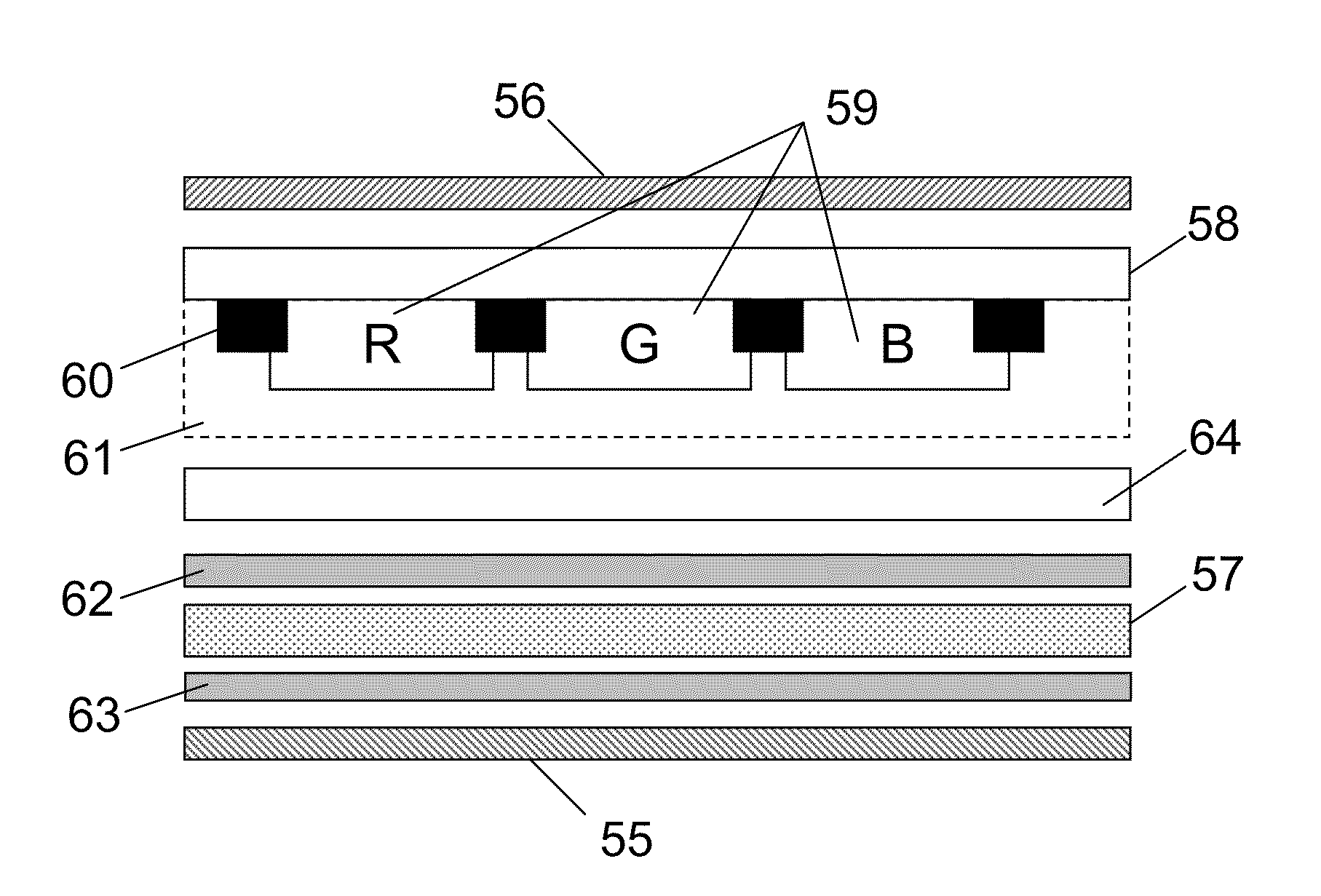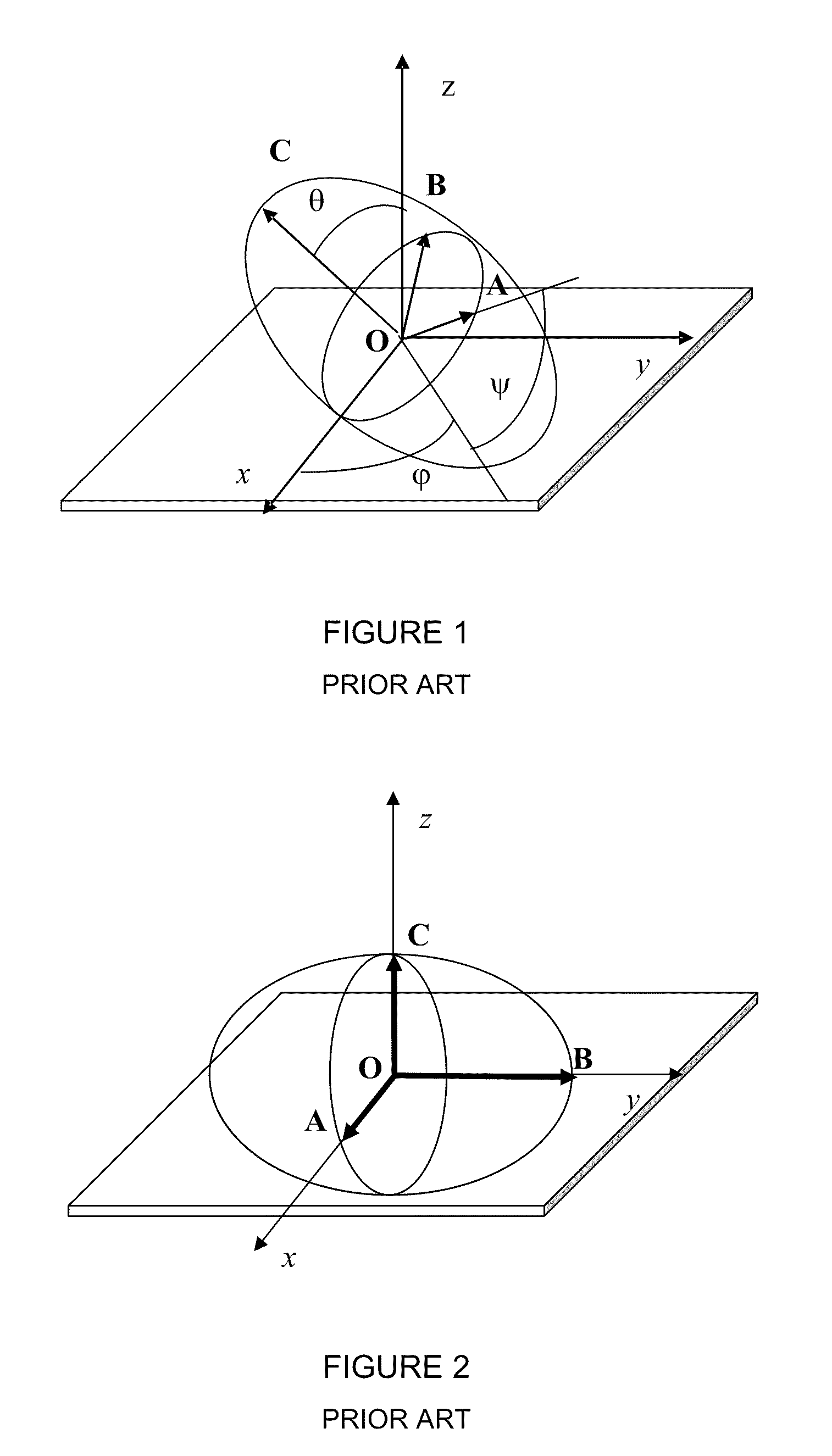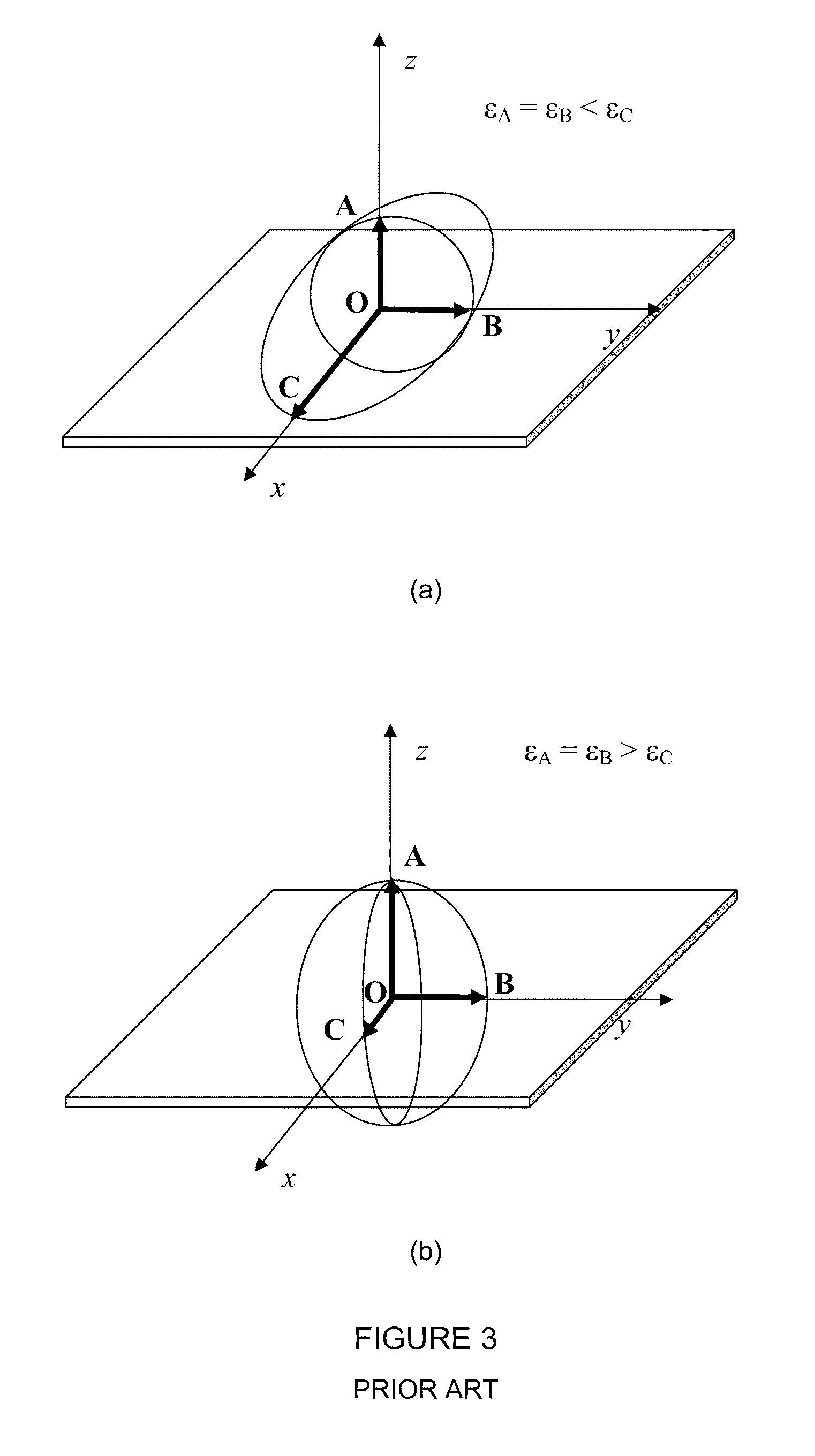Color liquid crystal display and compensation panel
a liquid crystal display and compensation panel technology, applied in the field of color liquid crystal display (lcd) devices, can solve the problems of lcds that cannot display an absolute black state, light leakage remains a problem to be solved, and typical retardation films have a normal dispersion
- Summary
- Abstract
- Description
- Claims
- Application Information
AI Technical Summary
Benefits of technology
Problems solved by technology
Method used
Image
Examples
example 1
[0192]This example describes the preparation of polycyclic organic compound—Table 2, structural formula 1:
[0193]
[0194]4,4′-(5,5-Dioxidodibenzo[b,d]thiene-3,7-diyl)dibenzenesulfonic acid (II) was prepared by sulfonation of 1,1′:4′,1″:4″,1′″-quaterphenyl. 1,1′:4′,1″:4″,1′″-Quaterphenyl (10 g) was charged into 20% oleum (100 ml). Reaction mass was agitated for 5 hours at ambient conditions. After that the reaction mixture was diluted with water (170 ml). The final sulfuric acid concentration was around 55%. The precipitate was filtered and rinsed with glacial acetic acid (˜200 ml). Filter cake was dried in oven at ˜110° C. The process yielded 8 g of 4,4′-(5,5-Dioxidodibenzo[b,d]thiene-3,7-diyl)dibenzenesulfonic acid.
[0195]The product was analyzed with 1H NMR (Brucker Avance-600, DMSO-d6, δ, ppm) and showed the following results: 7.735 (d, 4H, 4CHAr(3,3′,5,5′)); 7.845 (d, 4H, 4CHAr(2,2′,6,6′)); 8.165 (dd, 2H, 2CHAr(2,8)); 8.34 (m, 4H, 4CHAr(1,9,4,6)). The electronic absorption spectrum ...
example 2
[0196]The example describes synthesis of the mixture of bisbenzimidazo[1′,2′:3,4;1″,2″:5,6][1,3,5]triazino[1,2-a]benzimidazole-tricarboxylic acids, the heterocyclic molecular system of which is presented in Table 4, structural formula 27:
[0197]
A. 5-methyl-1,3-dihydro-2H-benzimidazol-2-one
[0198]4-Methyl-1,2-phenylenediamine dihydrochloride (20.75 g, 106 mmol) was ground with urea (7.64 g, 127 mmol). The mixture was charged to a heat-resistant beaker and heated up to 150° C. After 1.5 hours reaction mixture was cooled to room temperature. The solid material was triturated and charged to heat-resistant beaker and it still was heated at 150° C. for 1.5 hours. Then reaction mixture was dissolved in the boiling 1-1.5% aqueous solution of sodium hydroxide (1.5 L). Obtained solution was filtered from undissolved solid, boiled with activated black carbon (BAU-A, 2 g) for 20-30 min and filtered. Filtrate was acidified by concentrated hydrochloric acid till pH˜6. White precipitate was filtered...
example 3
[0203]The example describes synthesis of the mixture of bisbenzimidazo[1′,2′:3,4;1″,2″:5,6][1,3,5]triazino[1,2-a]benzimidazole-trisulfonic acids, the heterocyclic molecular system of which is presented in Table 4, structural formula 29:
[0204]
A. Synthesis of bisbenzimidazo[1′,2′:3,4;1″,2″:5,6][1,3,5]triazino[1,2-a]benzimidazole
[0205]2-Chloro-1H-Benzimidazole (4 g, 0.026 mol) was heated up to 200-220° C. and agitated for half hour (until hydrogen chloride stopped to evolve). Nitrobenzene was added into reaction mass and boiled for 25 minutes with agitation. After self cooling down to 80° C. it was filtered and rinsed with acetone. Filter cake was dried at ˜100° C. Yield 2.1 g (70%).
B. Synthesis of the mixture of bisbenzimidazo[1′,2′:3,4;1″,2″:5,6][1,3,5]triazino[1,2-a]benzimidazole-trisulfonic acids
[0206]Bisbenzimidazo[1′,2′:3,4;1″,2″:5,6][1,3,5]triazino[1,2-a]benzimidazole (2.0 g, 0.006 mol) was charged into 20% oleum (20 ml) and agitated overnight. After that the reaction mass was d...
PUM
| Property | Measurement | Unit |
|---|---|---|
| wavelength range | aaaaa | aaaaa |
| wavelengths | aaaaa | aaaaa |
| wavelengths | aaaaa | aaaaa |
Abstract
Description
Claims
Application Information
 Login to View More
Login to View More - R&D
- Intellectual Property
- Life Sciences
- Materials
- Tech Scout
- Unparalleled Data Quality
- Higher Quality Content
- 60% Fewer Hallucinations
Browse by: Latest US Patents, China's latest patents, Technical Efficacy Thesaurus, Application Domain, Technology Topic, Popular Technical Reports.
© 2025 PatSnap. All rights reserved.Legal|Privacy policy|Modern Slavery Act Transparency Statement|Sitemap|About US| Contact US: help@patsnap.com



